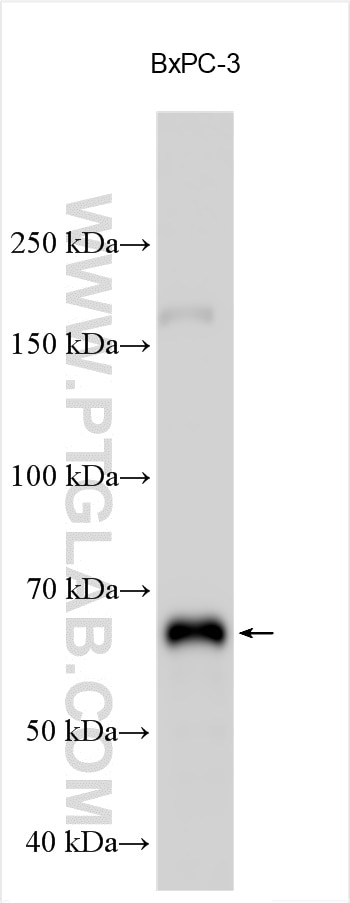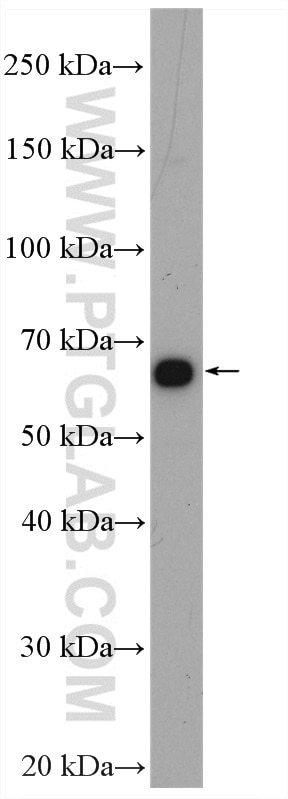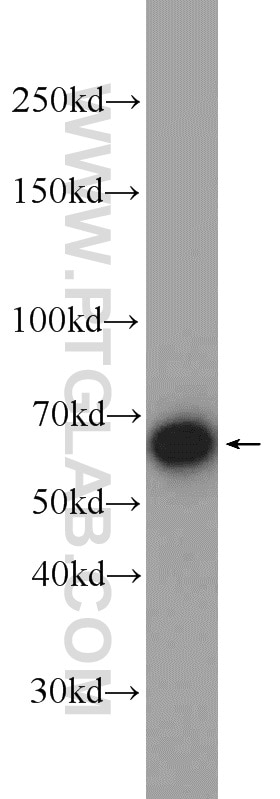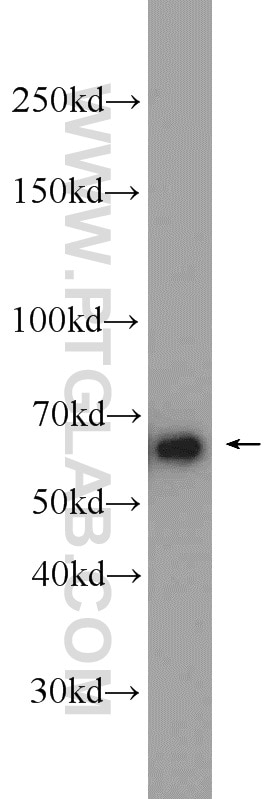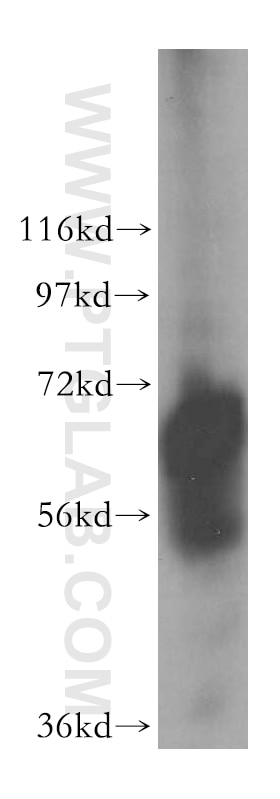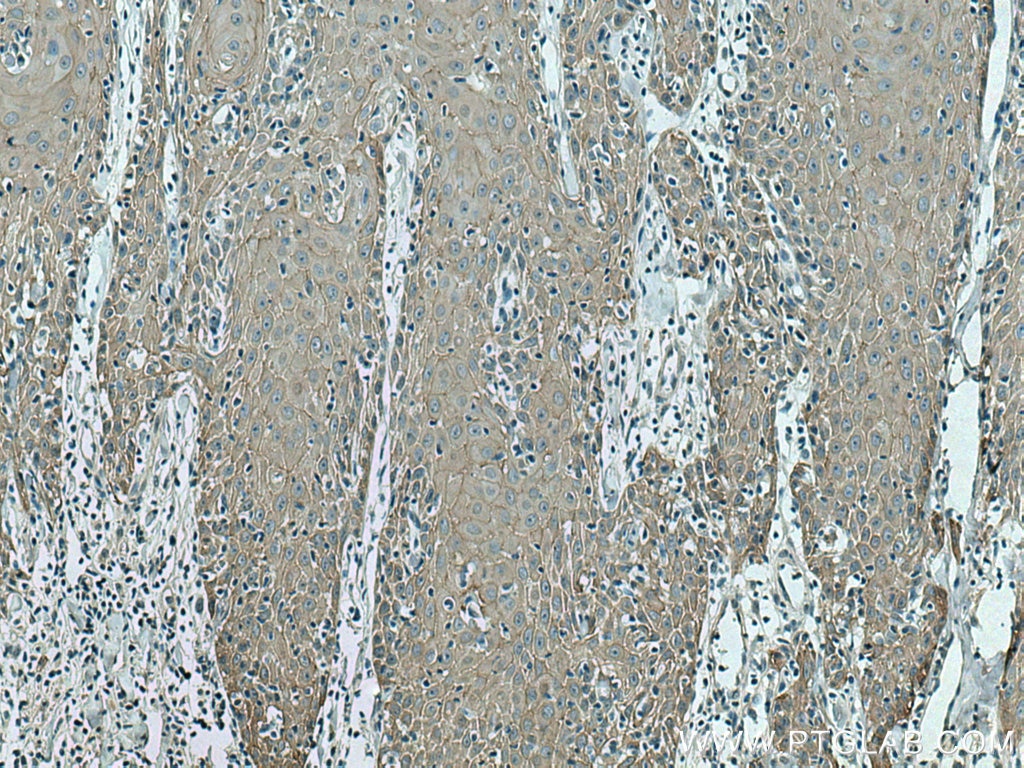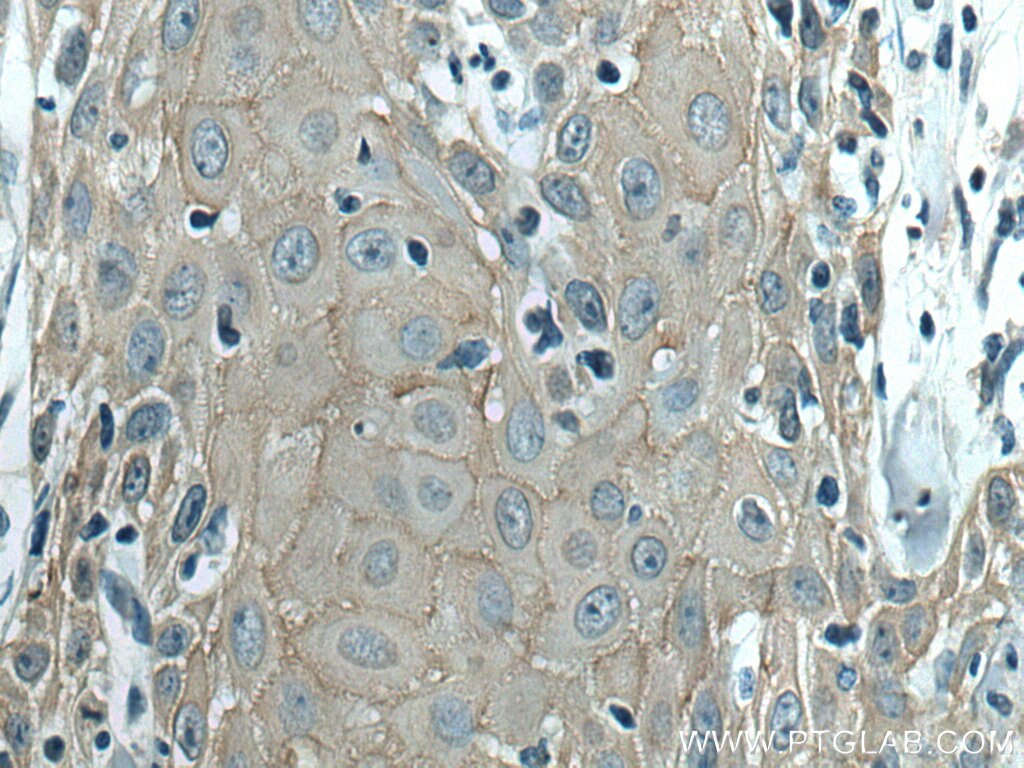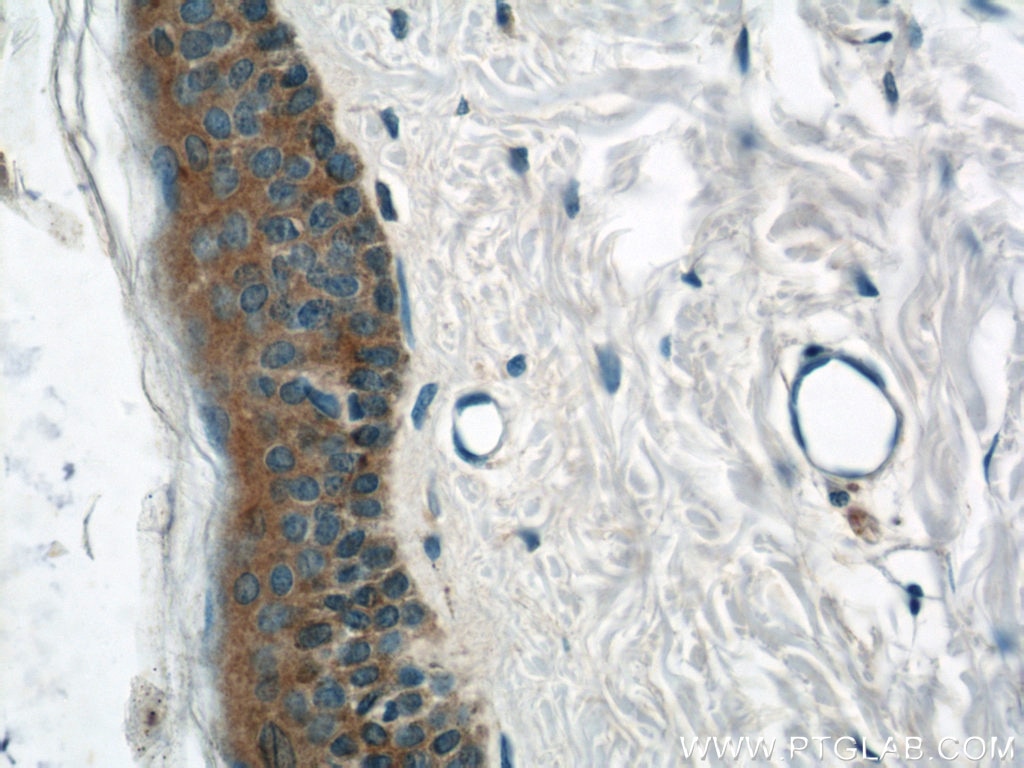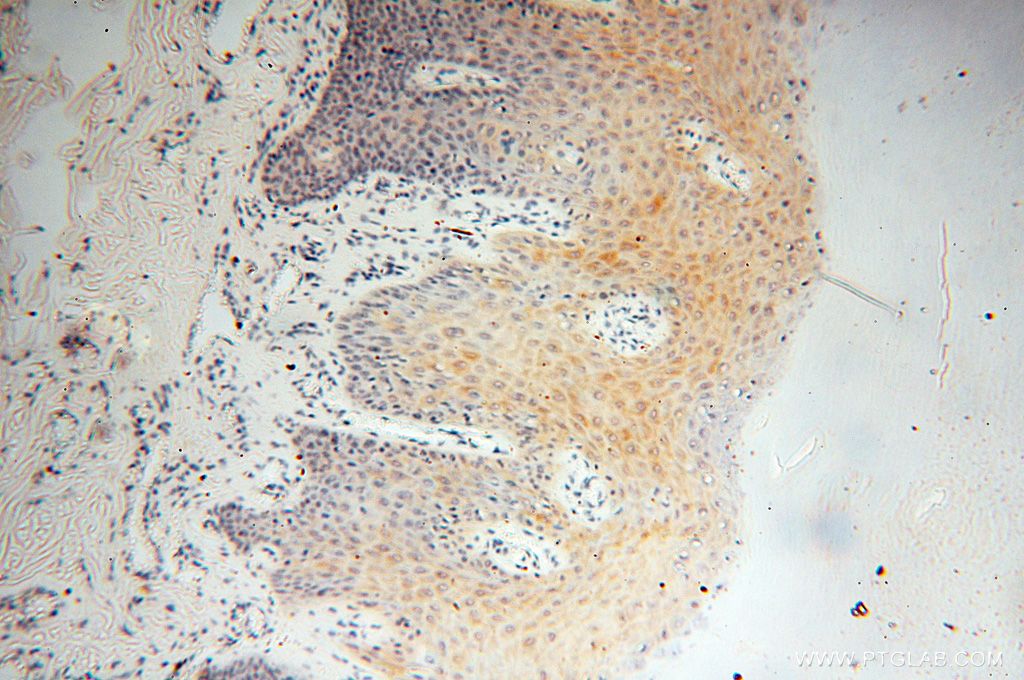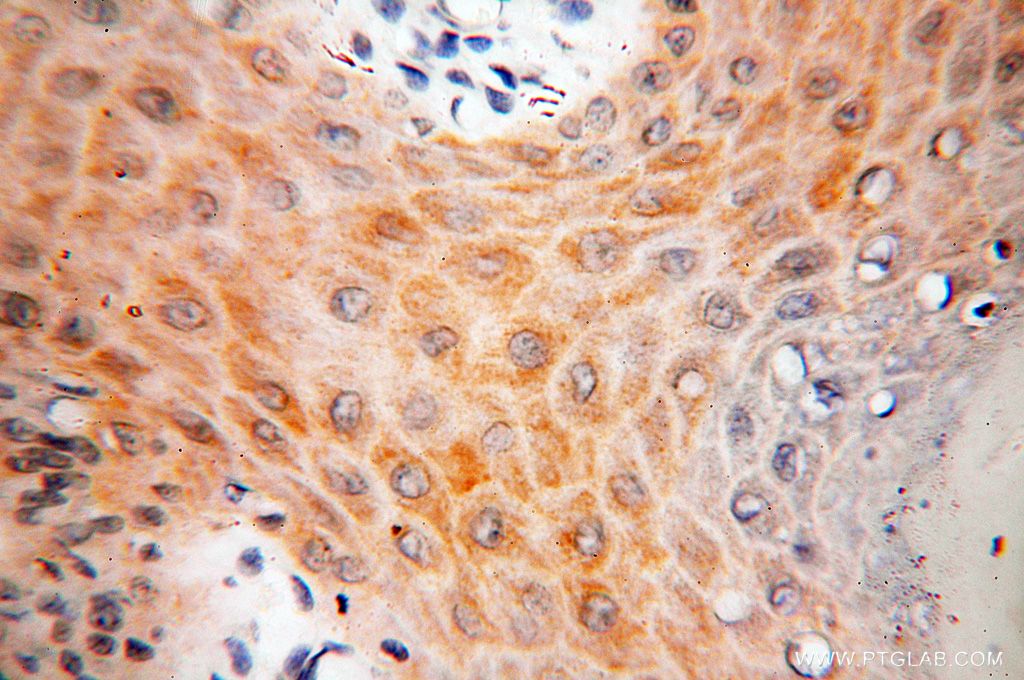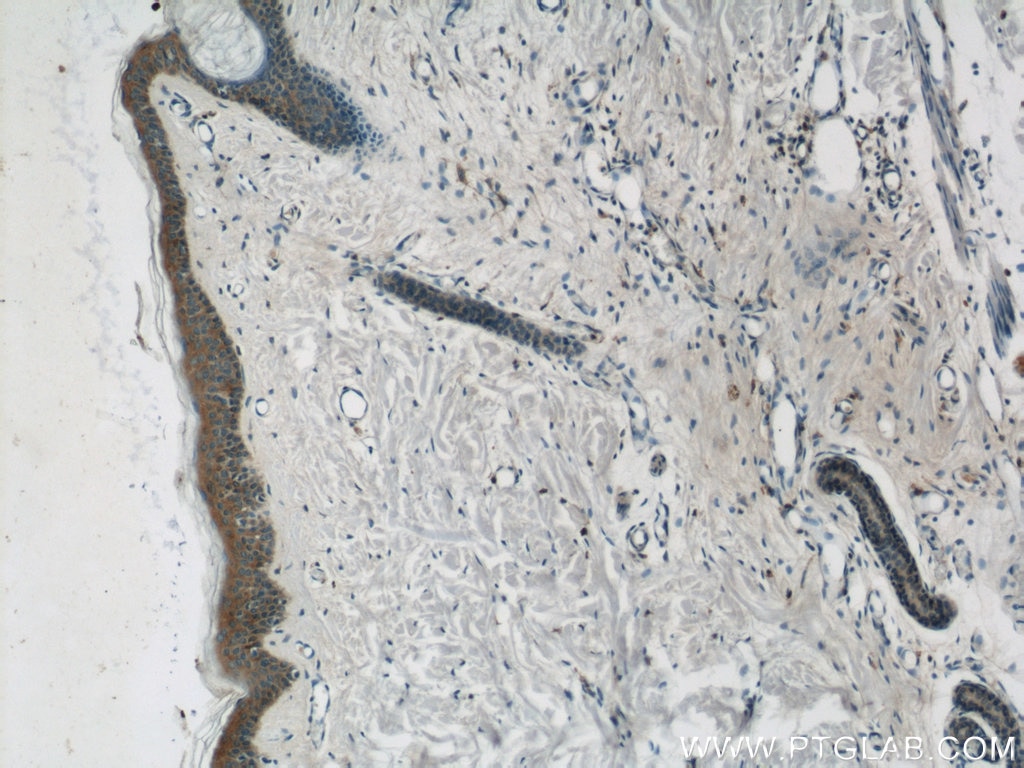Validation Data Gallery
Tested Applications
| Positive WB detected in | BxPC-3 cells, A431 cells, BGC-823 cells |
| Positive IHC detected in | human skin cancer tissue, human skin tissue Note: suggested antigen retrieval with TE buffer pH 9.0; (*) Alternatively, antigen retrieval may be performed with citrate buffer pH 6.0 |
Recommended dilution
| Application | Dilution |
|---|---|
| Western Blot (WB) | WB : 1:2000-1:20000 |
| Immunohistochemistry (IHC) | IHC : 1:50-1:500 |
| It is recommended that this reagent should be titrated in each testing system to obtain optimal results. | |
| Sample-dependent, Check data in validation data gallery. | |
Published Applications
| KD/KO | See 3 publications below |
| WB | See 11 publications below |
| IHC | See 3 publications below |
| IF | See 2 publications below |
| IP | See 1 publications below |
Product Information
17542-1-AP targets TRIM29 in WB, IHC, IF, IP, ELISA applications and shows reactivity with human samples.
| Tested Reactivity | human |
| Cited Reactivity | human, mouse |
| Host / Isotype | Rabbit / IgG |
| Class | Polyclonal |
| Type | Antibody |
| Immunogen |
CatNo: Ag11600 Product name: Recombinant human TRIM29 protein Source: e coli.-derived, PGEX-4T Tag: GST Domain: 239-588 aa of BC017352 Sequence: DQTCICYLCMFQEHKNHSTVTVEEAKAEKETELSLQKEQLQLKIIEIEDEAEKWQKEKDRIKSFTTNEKAILEQNFRDLVRDLEKQKEEVRAALEQREQDAVDQVKVIMDALDERAKVLHEDKQTREQLHSISDSVLFLQEFGALMSNYSLPPPLPTYHVLLEGEGLGQSLGNFKDDLLNVCMRHVEKMCKADLSRNFIERNHMENGGDHRYVNNYTNSFGGEWSAPDTMKRYSMYLTPKGGVRTSYQPSSPGRFTKETTQKNFNNLYGTKGNYTSRVWEYSSSIQNSDNDLPVVQGSSSFSLKGYPSLMRSQSPKAQPQTWKSGKQTMLSHYRPFYVNKGNGIGSNEAP 相同性解析による交差性が予測される生物種 |
| Full Name | tripartite motif-containing 29 |
| Calculated molecular weight | 588 aa, 66 kDa |
| Observed molecular weight | 65 kDa |
| GenBank accession number | BC017352 |
| Gene Symbol | TRIM29 |
| Gene ID (NCBI) | 23650 |
| RRID | AB_2272412 |
| Conjugate | Unconjugated |
| Form | |
| Form | Liquid |
| Purification Method | Antigen affinity purification |
| UNIPROT ID | Q14134 |
| Storage Buffer | PBS with 0.02% sodium azide and 50% glycerol{{ptg:BufferTemp}}7.3 |
| Storage Conditions | Store at -20°C. Stable for one year after shipment. Aliquoting is unnecessary for -20oC storage. |
Background Information
TRIM29(Tripartite motif-containing protein 29) is also named as ATDC( Ataxia telangiectasia group D-associated protein). ATDC protein physically interacted with the intermediate filament protein vimentin, a protein kinase C substrate and colocalizing protein, and with an inhibitor of protein kinase C, PKCI1 (PMID:7644499). Knockdown of TRIM29 in airway epithelial cells enhances type I interferon production, and in human nasopharyngeal carcinoma cells results in almost complete Epstein-Barr virus clearance. TRIM29 is also highly induced by cytosolic double-stranded DNA in myeloid dendritic cells (PMID: 29038422). Western detected both full-length TRIM29 (65 kDa) and a truncated variant of TRIM29 with a molecular weight of about 50 kDa (PMID: 26095369).
Protocols
| Product Specific Protocols | |
|---|---|
| IHC protocol for TRIM29 antibody 17542-1-AP | Download protocol |
| WB protocol for TRIM29 antibody 17542-1-AP | Download protocol |
| Standard Protocols | |
|---|---|
| Click here to view our Standard Protocols |
Publications
| Species | Application | Title |
|---|---|---|
Mol Cancer CircIL4R activates the PI3K/AKT signaling pathway via the miR-761/TRIM29/PHLPP1 axis and promotes proliferation and metastasis in colorectal cancer.
| ||
Oncogenesis Galectin-9 promotes a suppressive microenvironment in human cancer by enhancing STING degradation. | ||
iScience Alternative transcribed 3' isoform of long non-coding RNA Malat1 inhibits mouse retinal oxidative stress | ||
PLoS One Ataxia-Telangiectasia Group D Complementing Gene (ATDC) Promotes Lung Cancer Cell Proliferation by Activating NF-κB Pathway. | ||
Cancer Sci Role of deltaNp63(pos) CD44v(pos) cells in the development of N-nitroso-tris-chloroethylurea-induced peripheral-type mouse lung squamous cell carcinomas. | ||
Cancer Biol Ther iTRAQ-based quantitative proteomic analysis of differentially expressed proteins in chemoresistant nasopharyngeal carcinoma. |

